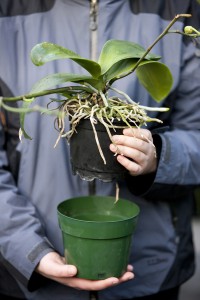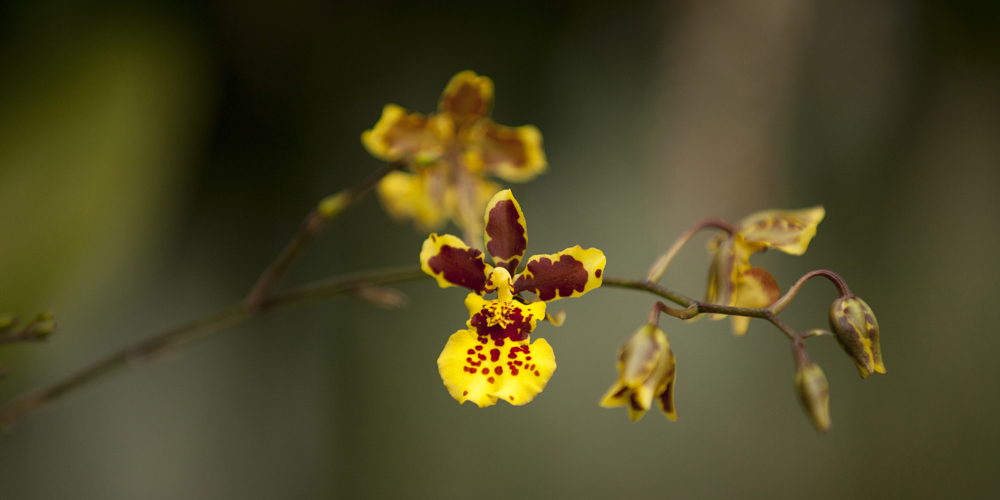Organic Orchid Care
Posted in Horticulture on March 10 2015, by Sonia Uyterhoeven
Sonia Uyterhoeven is NYBG‘s Gardener for Public Education.
 The best way to avoid or eliminate pest and disease problems when growing orchids in your home is to follow good cultural practices. Correct water practices, consistent low-level fertilizing, a good growing medium, proper light requirements, and adequate humidity levels are all essential to getting your exotic friends to thrive.
The best way to avoid or eliminate pest and disease problems when growing orchids in your home is to follow good cultural practices. Correct water practices, consistent low-level fertilizing, a good growing medium, proper light requirements, and adequate humidity levels are all essential to getting your exotic friends to thrive.
Don’t worry if you were unable to check off all of those boxes—few of us ever do. Sometimes, all that we do to take care of our leafy little friends still isn’t enough. But let’s take a look at some user-friendly products that we have on hand to treat an ailing orchid. The first on the list is a grapefruit.
If you notice that something is munching holes in the leaves of your orchid, but you can’t find the culprit, then it’s probably a slug. They nestle into the loose, moist pieces of your fir bark potting mix and wait until dark before they strike. These nocturnal creatures can do quite a bit of damage. Leave an overturned grapefruit or citrus rind in your pot to deal with this problem. The slugs will crawl up into the damp cavity and you can then toss it out (slug and grapefruit rind together) in the morning. If you’re not a citrus person, then a large leaf of lettuce will do. Alternatively, the famous beer-in-a-shallow-bowl trick (about 1/2 an inch of beer) will make everyone happy.
For more common pest problems such as aphids, mealybugs, and scale, try reaching into your household cupboard and pulling out the rubbing alcohol or the Murphy’s Oil Soap®. You can dilute the soap by adding two tablespoons of it to a quart of water. Spray the foliage—top and bottom—and let it sit for 15–20 minutes before you rinse off the leaves. For scale, take a soft toothbrush or a cotton swab soaked with rubbing alcohol (70% isopropyl rubbing alcohol) and give it a spot treatment.
Any new treatment should first be tried on a single leaf or isolated part of the plant to see how your orchid is going to respond. Spray early in the morning or late in the day. Some sprays dry off quickly in the middle of the day and lose their potency while other times the combination of the spray and the intensity of the mid-day sun can burn the leaves. You will miss some insects the first time you spray, so repeat the treatment once a week for several weeks.

If your orchids have black or brown spots that start to grow and look watery or mushy, there is a good chance that they have a bacterial or fungal problem. For this scenario, stick your hand back into the cupboard and grab the cinnamon—nature’s favorite natural fungicide. Cut off the infected portion of the leaf and sprinkle cinnamon over the area. Alternatively, you can create a thick paste of cinnamon and either cooking oil or Elmer’s® glue and apply it to the cut edge. For smelly, yellow-brown bacterial infections, cut off the infected portion of the plant and apply Neosporin® to the cut edge with a Q-tip.
There is no guarantee that these household remedies will work in all instances, but they often do, and they will certainly make you feel better as you fret over your languishing orchid. And chances are good that you already have a number of these solutions in your cupboard at home.

